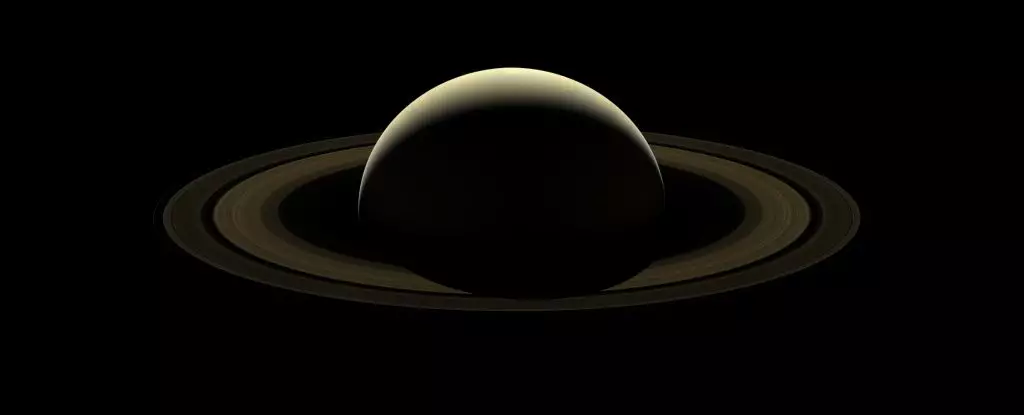The recent findings from scientists regarding Saturn’s massive, seasonal energy imbalance have caused ripples in the scientific community. This revelation not only sheds light on the complex dynamics of gas giant planets but also challenges our existing knowledge of planetary and atmospheric science. Physicist Liming Li, from the University of Houston, emphasizes the significance of this discovery, stating that it marks a pivotal moment in our understanding of planets and their evolution.
The energy imbalance observed on Saturn is a direct result of the interplay between the planet’s absorption of solar radiation and its emission of thermal radiation into space. Unlike Earth, Saturn’s orbit is elliptical, with a significant variation in its distance from the Sun. This eccentricity leads to fluctuations in the amount of solar radiation received by Saturn, resulting in a seasonal energy imbalance of up to 16 percent. This unexpected finding challenges the conventional wisdom that gas giants possess a balanced global energy budget.
The newfound understanding of Saturn’s energy imbalance has far-reaching implications for planetary weather systems. The unbalanced energy distribution could be a key factor in the formation of massive convective storms that penetrate deep into the planet’s atmosphere. Moreover, this discovery prompts a reevaluation of existing models and theories concerning gas giants, urging scientists to reconsider the factors contributing to planetary climate and evolution.
Comparisons between Earth and Saturn highlight the unique characteristics of each planet’s energy distribution. While Earth’s more circular orbit results in a relatively stable energy balance, Saturn’s elliptical orbit introduces significant variability in its energy intake. This contrast underscores the need for a comprehensive understanding of planetary dynamics across different celestial bodies.
The implications of Saturn’s energy imbalance extend beyond the ringed planet itself. Similar processes may be at play on other gas giants, such as Jupiter, Neptune, and Uranus, each with its own orbital eccentricity and energy distribution. The study of these planetary bodies presents an opportunity to unravel the mysteries of weather patterns and climate systems across the solar system.
As scientists delve deeper into the complexities of planetary energy balance, new questions and challenges arise. The evolving understanding of gas giants’ seasonal dynamics opens the door to future research and exploration. By identifying limitations in current observations and formulating testable hypotheses, researchers pave the way for future missions and discoveries in the realm of planetary science. Saturn’s enigmatic energy imbalance serves as a constant reminder of the boundless mysteries awaiting discovery in the vast expanse of our solar system.


Leave a Reply